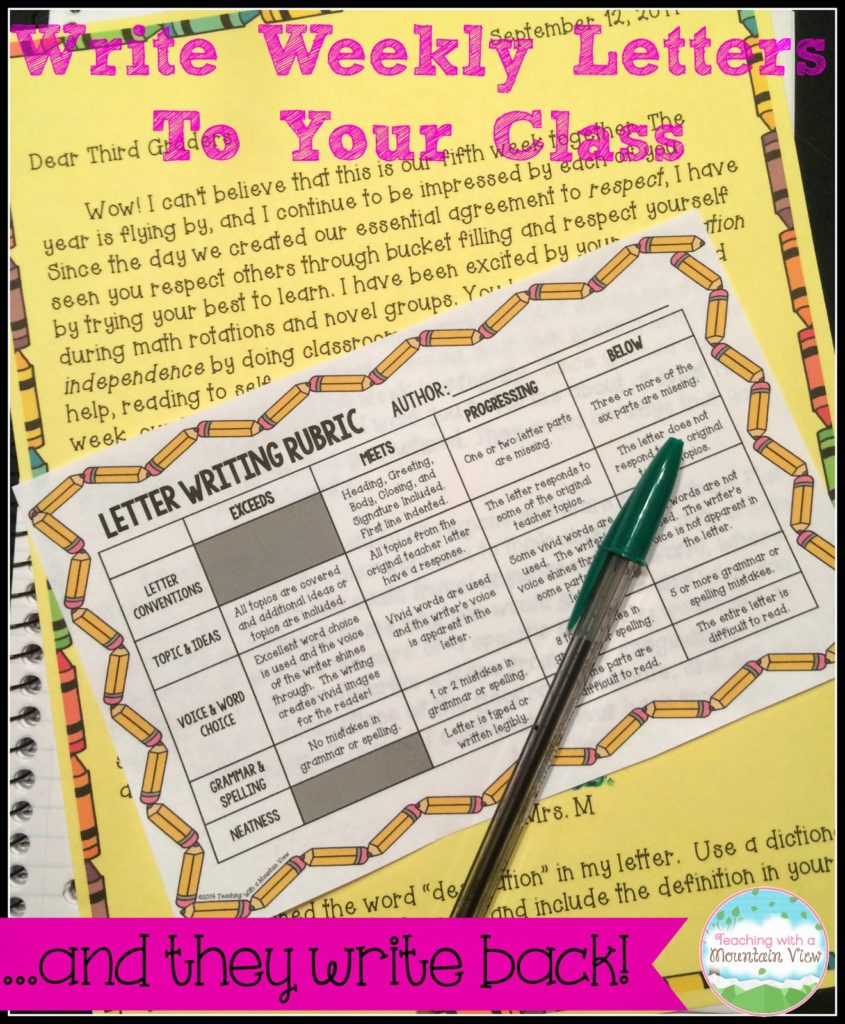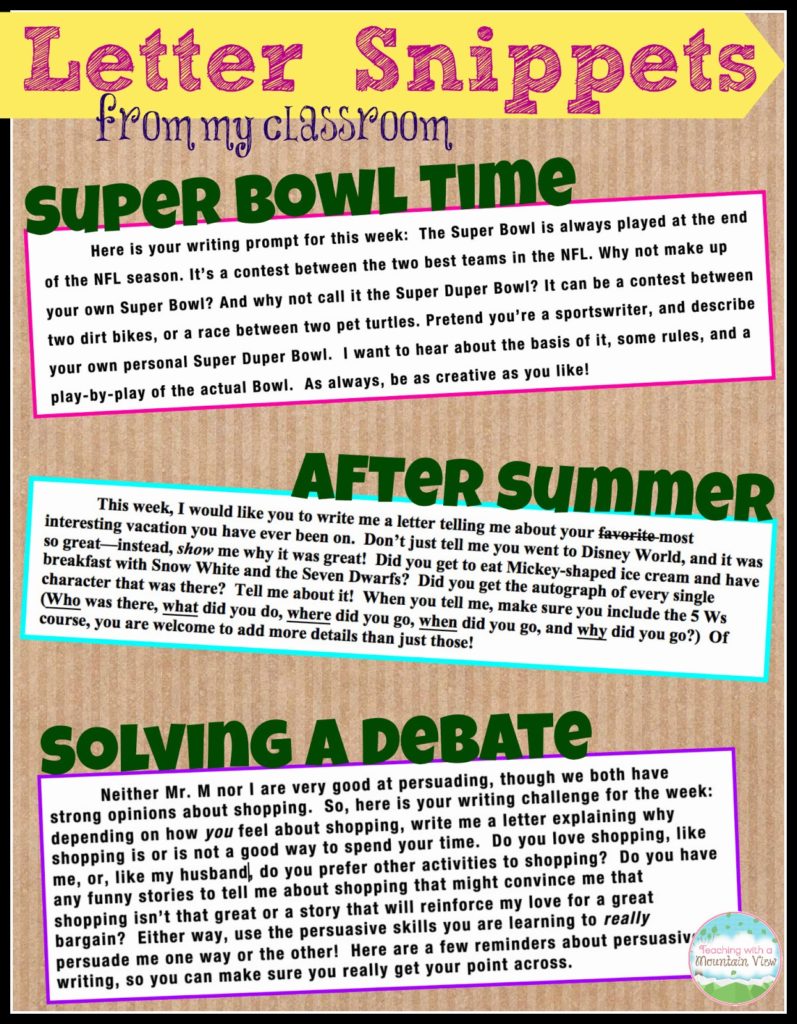Guest blog post by Mary from Teaching With a Mountain View.
 I vividly remember my first day student teaching… not the details of what I was teaching or the clothes I was wearing, but the way my cooperating teacher captivated her students. She handed them their first homework assignment— writing a letter in response to a letter she had written to them—and explained that it would be a weekly assignment. They groaned, but she didn’t miss a beat. “You’re going to grow to love this!” she told them. They trusted her, and she couldn’t have been more right.
I vividly remember my first day student teaching… not the details of what I was teaching or the clothes I was wearing, but the way my cooperating teacher captivated her students. She handed them their first homework assignment— writing a letter in response to a letter she had written to them—and explained that it would be a weekly assignment. They groaned, but she didn’t miss a beat. “You’re going to grow to love this!” she told them. They trusted her, and she couldn’t have been more right.
Since that year, I have always written weekly letters to my students and required that they respond to me. It has become a part of our weekly homework routine, and it is the one thing I most look forward to grading every single week. It builds community among the class, my students (and their parents) get to know me, I get to know my students, it is an excellent way to review material from the week or let students get creative, and kids learn to love writing in a totally nonthreatening environment.
How It Works
Every Sunday evening, I curl up on the couch with my laptop and write a letter to my students. I do a quick recap of anything entertaining from my weekend (kids love to know you’re human, too!), and I may ask them to share something about their life with me. Then, I give them a prompt or two that they must answer in a letter back to me.
For example, if we focused on a specific character trait the previous week, I would ask them to give me examples of how they embodied that trait this week. When we were studying regions of the United States, part of their letter back to me would require them to tell me where in the world they would go if they could go anywhere.
Typically, I would give them each a copy of the letter on Monday morning, and they would turn in their responses (in letter format) by Thursday. At the beginning of the year, we spent time reviewing the format and conventions of a letter.
You Can Do It!
I know what you are thinking: This sounds like a huge amount of work. I promise, it’s not! It took me less than 10 minutes each week to write my letter. You could even assign a monthly letter if weekly sounds overwhelming, or if you have younger students.
When my teammates got on board with letter writing, we would take turns writing the assignment part of the letter and just add our own introduction. I would also jot down topics all week so that it wouldn’t take me long to write my letter when it came time. I tried to include different types of writing (persuasive, informative, descriptive, narrative) throughout the year. My two all-time favorite prompts were the one where students had to argue for or against a weekend of shopping and the one where they had to come up with 5 pieces of advice that started with “Never” and 5 pieces of advice that started with “Always.”
Here are some topic starters or themes to get you thinking:
• Current Events, Sports, Holidays
• Funny or Bizarre Holidays and Dates
• Current Classroom Topics of Study
• Follow Up or Reflecting on Read Alouds or other Books
• Reading Responses
• Weekend Recaps
Believe it or not, students look forward to receiving their new letter every Monday. They equally look forward to the (very brief) notes I jot on their return letters. In addition to writing short notes (Wow! Awesome! Did you really do that? I totally agree!) on their letters, I used a half-page grading rubric to hold them accountable for their writing.
Weekly Letter Writing Freebie
You can download the free grading rubric, example letters, an information sheet, and monthly topic ideas at my Teachers Pay Teacher store!
Letter writing is a wonderful way to keep even the most reluctant writers writing and to hone those writing skills all year long!
Mary teaches grades 3-5 in beautiful Colorado and has a passion for creating differentiated and engaging assignments. She creates teacher resources and blogs at Teaching With a Mountain View.









